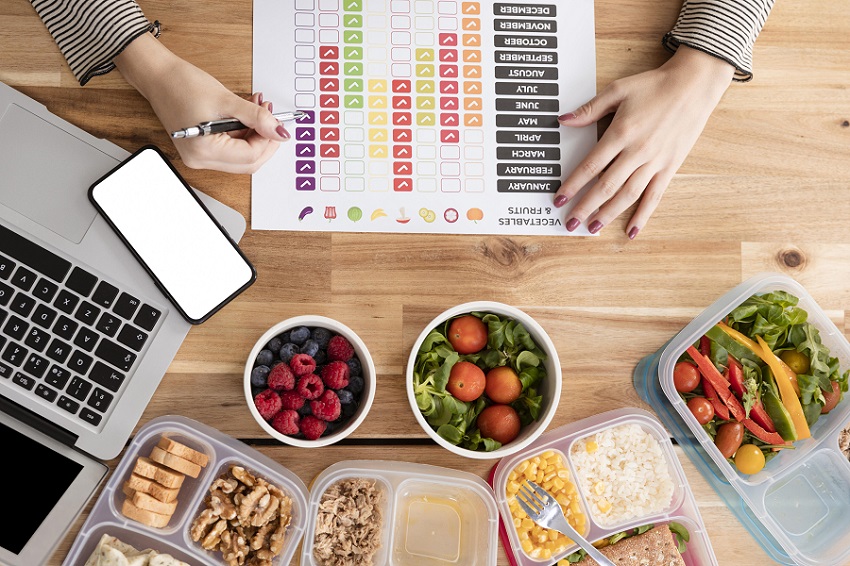Food prices continue to climb across the U.S., Canada, and beyond, making the grocery store one of the most challenging fronts for any household budget. Whether you’re feeding a large family or just yourself, mastering frugal grocery shopping habits is a powerful skill that can save you hundreds of dollars every single month.
The best part? Saving money on groceries doesn’t mean you have to sacrifice taste, nutrition, or varie
ty. With smart planning, a few strategic changes, and the right tools, you can dramatically cut your food costs while still enjoying fresh, delicious, and satisfying meals. This ultimate guide provides actionable grocery savings tips, proven budgeting methods, and practical ways to keep your pantry stocked without breaking the bank.
Why Frugal Grocery Shopping Is More Important Than Ever
Grocery spending is a significant monthly expense for most households, and rising inflation has pushed food costs to the top of the list of financial concerns. Reports from agencies like the USDA and Canada’s Food Price Report consistently show year-over-year price increases. This new economic reality means shoppers need smarter, more effective strategies to stretch every dollar.
Adopting frugal grocery shopping habits isn’t just about pinching pennies; it’s about creating crucial financial breathing room. Reducing your grocery bill frees up cash for emergencies, debt repayment, or meaningful family activities. It’s also an eco-friendly choice—buying only what you need significantly cuts down on food waste and excess packaging, helping the planet while you help your wallet.
Step One: Smart Planning Before You Shop
The single most important factor in frugal grocery shopping is what you do before you even leave the house. Shopping without a plan is a direct path to impulse buys and wasted food, which can wreck your budget.
Create a Weekly Meal Plan
Planning your meals in advance is the absolute foundation of saving money. A weekly meal plan allows you to focus on versatile ingredients, avoid expensive last-minute takeout, and ensure every item in your cart has a purpose.
Pro Tip: Start with a “pantry-first” approach. Take inventory of what you already have and plan meals around those ingredients. This simple habit reduces waste and keeps your budget tight.
Strategy: Choose recipes that share common, low-cost ingredients like rice, beans, pasta, and frozen vegetables to ensure nothing goes unused.
Make a Master Grocery List
A running list of essentials is your best defense against overspending. Use apps like Google Keep, AnyList, or Out of Milk to update your list in real time as you run out of items like milk, bread, eggs, and pantry staples. Sticking to your list is one of the simplest and most effective grocery savings tips.
Check Flyers and Store Apps
Before you shop, review weekly flyers or store apps for the best current deals. Major chains like Walmart, Kroger, Aldi, Loblaws, and Costco post new sales every week. Look for digital coupons and loyalty point offers that you can combine with in-store promotions for maximum savings.
Shop Your Calendar
Timing matters. Plan your shopping trips for midweek (Tuesday or Wednesday), when stores often mark down perishable items to make room for weekend inventory. Also, find out if your local store has a specific day for manager’s markdowns on meat and bakery items.
Proven Strategies to Cut Grocery Costs
Once your plan is in place, it’s time to implement money-saving strategies that work.
Shop with Cash or a Budget App
Setting a strict grocery budget is key. Consider using the cash-envelope system—withdraw a set amount of cash for groceries and leave your cards at home. This physical limit keeps you intensely mindful of every purchase. Alternatively, use budgeting apps like Mint or YNAB (You Need A Budget) to track your spending in real time.
Buy in Bulk—Strategically
Warehouse clubs and bulk bins can be fantastic for saving money on shelf-stable items like pasta, rice, flour, and canned goods. However, frugal shopping means buying bulk wisely. Only purchase items you use regularly and that have a long shelf life. Avoid bulk-buying perishables unless you have a clear plan to freeze or use them immediately.
Embrace Store Brands
Generic or store-brand products often match—and sometimes exceed—the quality of national name brands. Compare the ingredients and nutrition labels; you’ll frequently find they are nearly identical. For staples like sugar, flour, cereal, and dairy, switching to store brands can save you 20–40%.
Stack Coupons and Cashback Offers
For maximum savings, learn to “stack” discounts. Combine paper manufacturer coupons with digital store coupons and cashback apps.
- Ibotta & Checkout 51: Offer cashback on specific items after you upload your receipt.
- Rakuten: Provides cashback for online grocery orders.
- Fetch Rewards: Gives you points for any receipt, redeemable for gift cards.
Stacking these offers on top of sale prices can lead to items being nearly free.
Take Advantage of Loyalty Programs
Never shop without your loyalty card. Grocery chains like Safeway, Kroger, Metro, and Real Canadian Superstore offer programs that provide exclusive discounts, personalized offers, and points that can be redeemed for free groceries—essentially free money for simply signing up.
Shop Smarter in the Store
Your strategy continues the moment you step inside the store.
Stick to the Perimeter
Fresh, whole foods like produce, dairy, and meat are typically located around the store’s perimeter. The center aisles are often filled with processed, packaged, and more expensive items. Focusing your shopping on the perimeter leads to a healthier, more cost-effective cart.
Compare Unit Prices
Bigger packages aren’t always the better deal. Always check the unit price (the price per ounce, pound, or liter) on the shelf tag. This is the only way to accurately compare the true cost between different brands and sizes.
Avoid Pre-Packaged Convenience Foods
Pre-cut fruits, pre-shredded cheese, and ready-to-eat meals come with a significant convenience markup. Buying whole ingredients and doing the prep work yourself is one of the easiest frugal grocery shopping habits to adopt for immediate savings.
Watch for Manager’s Specials
Keep an eye out for brightly colored discount stickers on meat, bread, and dairy items that are nearing their sell-by dates. These “manager’s specials” can slash prices by 50% or more. Just be sure to freeze or cook these items immediately to extend their life.
Reduce Food Waste for Bigger Savings
Food waste is a massive hidden cost in any grocery budget. Every dollar spent on food that ends up in the trash is money lost.
Store Food Correctly
Learn proper storage techniques to extend the life of your groceries. For example:
- Store leafy greens in airtight containers with a paper towel to absorb moisture.
- Keep potatoes and onions in a cool, dark place away from each other to prevent sprouting.
First In, First Out (FIFO)
Organize your fridge and pantry using the FIFO method. When you unpack groceries, move older items to the front and place newer ones in the back. This ensures you use food before it spoils.
Freeze Extras and Leftovers
Your freezer is a frugal shopper’s best friend. You can freeze meat, bread, baked goods, and even many fruits and vegetables. When you see a great sale, stock up and freeze for later. Leftovers should also be portioned and frozen for quick, convenient future meals.
Meal Prep and Cooking Hacks
Taking control in the kitchen is the final, powerful step in frugal grocery shopping.
Batch Cooking
Dedicate a few hours each week to batch cooking. Prepare large quantities of soups, stews, casseroles, or grilled chicken, and freeze them in individual meal-sized portions. This saves time, reduces energy costs, and prevents the temptation of expensive takeout on busy nights.
Cheaper Protein Sources
Incorporate more plant-based proteins like beans, lentils, and tofu into your diet. They cost a fraction of meat while offering excellent nutrition. When you do cook meat, stretch it further by adding beans, grains, or extra vegetables to dishes like chili, pasta sauces, and casseroles.
Repurpose Leftovers
Get creative with leftovers. Last night’s roasted chicken can become today’s chicken salad, tacos, or a hearty soup. Repurposing meals prevents “leftover fatigue” and ensures nothing goes to waste.
Frugal Grocery Shopping for Families
Feeding a family presents unique challenges, from picky eaters to packing school lunches.
- Shop Discount Chains: Stores like Aldi, WinCo, and No Frills offer rock-bottom prices on staples.
- Buy Snacks in Bulk: Purchase large packs of yogurt, crackers, or granola bars and divide them into reusable containers for single-serving snacks.
- Get Kids Involved: Let children help with meal planning and prep. They are more likely to eat what they helped create, reducing waste.
- Homemade Lunches: Prepare muffins, trail mix, or sandwiches at home instead of buying expensive pre-packaged options.
Seasonal, Regional, and Tech Tips
Shop Seasonally and Locally
Seasonal produce is always fresher, tastier, and cheaper. Buy strawberries in summer and squash in the fall. Visit farmers’ markets near closing time for the best deals on produce that vendors don’t want to haul back.
U.S.-Specific Tips
- Use Kroger’s Free Friday Downloads for weekly freebies.
- Watch for Target Circle Deals on pantry staples.
- Shop Costco’s monthly coupon book for bulk savings.
Canada-Specific Tips
- Maximize PC Optimum points at Loblaws-affiliated stores.
- Use the Flipp App to price match flyers at stores like Walmart or FreshCo.
- Visit No Frills for their famous $1/$2 produce bins later in the day.
Technology Tools for Frugal Shoppers
- Flipp App: Aggregates all local flyers for easy price comparison.
- Too Good To Go: Lets you buy surplus unsold food from restaurants and bakeries at a deep discount.
- Flashfood: Offers heavily discounted groceries nearing their best-by date at participating stores.
Frequently Asked Questions (FAQs)
1. What day of the week is best for grocery shopping?
Tuesday or Wednesday is typically ideal, as stores often restock and mark down perishables midweek.
2. How can I save on fresh produce?
Buy what’s in season, shop at farmers’ markets near closing time, and don’t shy away from frozen fruits and vegetables for year-round savings and nutrition.
3. Are grocery delivery services cheaper than in-store shopping?
Delivery offers convenience but often includes fees and tips. However, some apps provide exclusive online discounts that may offset the cost if you shop carefully and avoid impulse adds.
4. Is buying organic food worth the price?
Not always. Refer to the Environmental Working Group’s “Dirty Dozen” and “Clean Fifteen” lists to prioritize your organic spending on items where it makes the most difference.
5. What is the cheapest protein to buy?
Beans, lentils, eggs, and frozen chicken are consistently among the most budget-friendly protein sources.
6. How much can you realistically save with frugal shopping habits?
With consistent planning and smart strategies like meal prepping and coupon stacking, many families report saving 20–40% on their monthly grocery bill.
Final Thoughts: Building Long-Term Frugal Habits
Practicing frugal grocery shopping habits is not about deprivation—it’s about making smarter, more intentional choices that align with your financial goals. From meal planning and coupon stacking to reducing food waste and leveraging technology, these strategies empower you to cut your grocery bill dramatically while still enjoying nutritious, satisfying meals.
Start small. Choose two or three strategies from this guide to implement this week. Track your savings over time, and you’ll see how every frugal choice adds up to significant financial freedom and a well-stocked kitchen.
Key Takeaway
The path to substantial grocery savings begins with preparation and consistency. By combining strategic meal planning, smart in-store tactics, and modern digital tools, you can slash your grocery bill, reduce waste, and enjoy high-quality meals every day—all without overspending.


